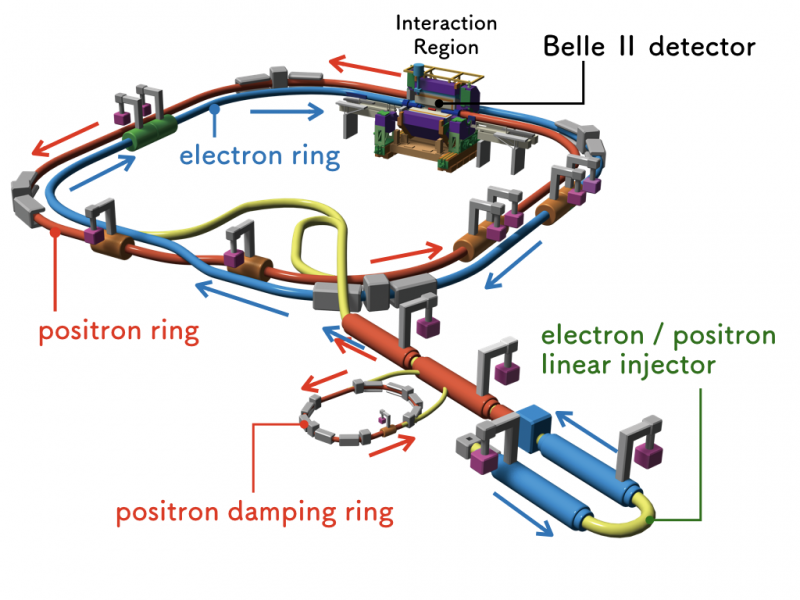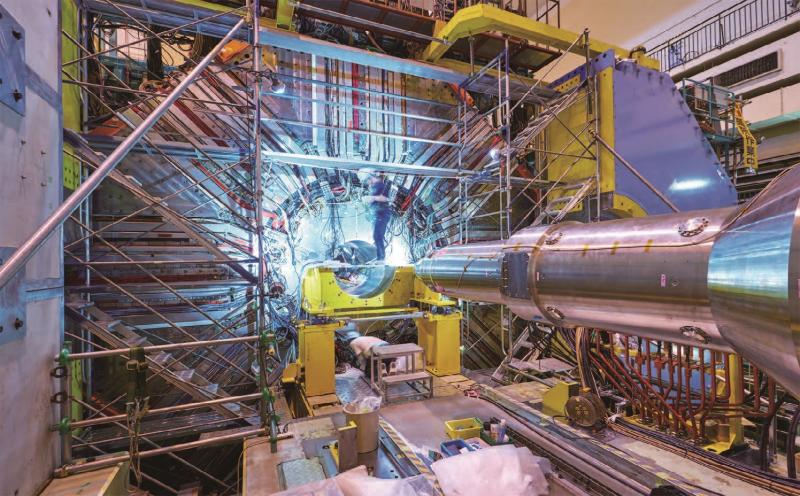March 23, 2018
Kavli Institute for the Physics and Mathematics of the Universe (Kavli IPMU)
 Last Wednesday, beams of electrons were successfully stored into the main ring of the SuperKEKB electron-positron collider, marking the first step towards electron and positron beam collisions in the collider's new stage of operation.
Last Wednesday, beams of electrons were successfully stored into the main ring of the SuperKEKB electron-positron collider, marking the first step towards electron and positron beam collisions in the collider's new stage of operation.
Researchers at the Kavli Institute for the Physics and Mathematics of the Universe (Kavli IPMU) have been involved with the Belle II experiment, a high energy physics project using Japan's largest particle accelerator SuperKEKB and the Belle II detector. They have been working with the High Energy Accelerator Research Organization (KEK) to upgrade the KEKB machine to the SuperKEKB, and the Belle detector into the Belle II detector.
With a brand new positron damping ring and the Belle II detector, a new stage of the SuperKEKB has begun. The previous KEKB collider ceased its operations in 2010.
A beam of positrons will be injected and stored around the beginning of the April, and then final accelerator tuning for beam collisions will begin. The first collisions of electrons and positrons are expected in the coming months.
This is the first step toward the SuperKEKB design luminosity, which is a factor of 40 times higher than the current world record set by KEKB.
SuperKEKB, along with the Belle II detector, is a facility designed to search for New Physics beyond the Standard Model by measuring rare decays of elementary particles such as b quarks, c quarks, and tau leptons.

In contrast to the LHC at CERN in Geneva, Switzerland, which is the world’s highest energy hadron accelerator, SuperKEKB/Belle II located at KEK in Tsukuba, Japan is designed to have the world’s highest luminosity (a factor of 40 times higher than the earlier KEKB machine that holds many records for accelerator performance). Thus, SuperKEKB is the leading accelerator on the “luminosity frontier”.
The Belle II detector at SuperKEKB was designed and built by an international collaboration of over 750 physicists from 25 countries. This collaboration is working closely with SuperKEKB accelerator experts to optimize the accelerator performance and backgrounds.
For more details, please refer to the press release by KEK.
Related Links:
Background information on the science goals of the SuperKEKB/Belle II facility






